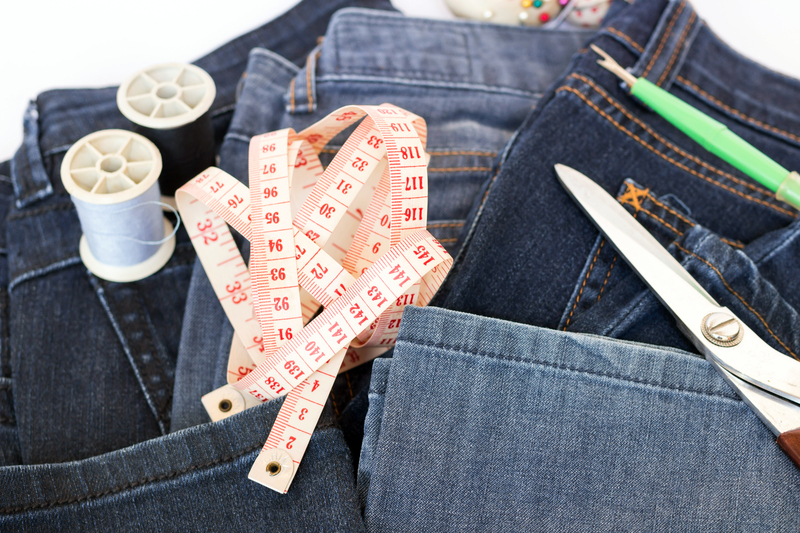Tips for Environmentally Friendly Cookware Disposal
If your kitchen cabinets are overflowing with old cookware--from battered nonstick pans to rusty cast iron skillets--it's time to make space for new culinary adventures. But before you toss your pots and pans in the trash, pause! Environmentally friendly cookware disposal is crucial to reducing landfill waste and conserving natural resources. This comprehensive guide will equip you with actionable strategies for dispose of cookware the eco-friendly way, ensuring you make a positive impact on the planet.
Why Environmentally Conscious Cookware Disposal Matters
Each year, countless pieces of cookware end up in municipal landfills, taking decades or even centuries to break down. Metal, nonstick coatings, plastic handles, and glass lids contribute to environmental pollution and can leach toxins into soil and groundwater. By adopting responsible methods for disposing of cookware, you can help:
- Reduce landfill waste
- Conserve precious resources like aluminum, stainless steel, and copper
- Support local communities by donating usable cookware
- Encourage circular economy practices
Choosing environmentally friendly cookware disposal techniques is a small step that makes a big difference over time!

How to Dispose of Cookware Responsibly
With numerous materials and construction methods, not all cookware is tossed the same way. Here are top tips for environmentally friendly cookware disposal--from recycling to creative repurposing and donation.
1. Repurpose Old Cookware Before Disposal
Before throwing anything away, think creatively: Can your cookware be reused in a different capacity? Repurposing not only reduces waste, but also gives your pans a fun new life.
- Planters: Large pots, Dutch ovens or saucepans can become quirky planters for flowers or herbs in your garden.
- DIY Bird Baths: Shallow pans or dishes can easily be transformed into delightful bird baths for your backyard.
- Organizers: Use skillets or muffin tins to organize tools, office supplies, or craft materials in your home or garage.
- Garden Sifters: Old colanders or mesh sieves make excellent garden compost sifters.
Repurposing gives cookware a second chance while reducing your environmental footprint.
2. Donate Usable Cookware
If your pots and pans are still in decent shape, but you no longer need them, donate cookware to local charities, shelters, or thrift stores. Many organizations welcome gently-used kitchenware to assist families or individuals in need.
- Community centers often accept functional cookware for community kitchens or fundraising sales.
- College students moving into dorms or new apartments appreciate affordable or free kitchen basics.
- Browse online "Buy Nothing" groups, local Facebook marketplaces or Freecycle to give away items directly to your neighbors.
Make sure all donated cookware is clean and safe for reuse. Avoid donating severely damaged or nonstick cookware with peeling surfaces, as it may be harmful to future users.
3. Recycle Cookware Made from Metal
Most cookware is made from metals like aluminum, stainless steel, or copper. These materials are highly recyclable, but recycling protocols may depend on your local facilities.
- Remove as much non-metal material as possible (plastic handles, glass lids, silicone), since some facilities only accept pure metals.
- Call your local recycling center to confirm they accept metal cookware. If yes, ask for specific instructions (drop-off times, sorting requirements, etc.).
- Scrap yards often take metal cookware for recycling, sometimes offering a small payment based on weight and metal type.
- Separate different metals if possible: for example, if a pan has an aluminum body but a steel handle, take apart what you can before recycling.
Recycling metal cookware helps preserve finite resources and reduces energy used in mining and processing raw materials.
4. Responsible Disposal of Nonstick Cookware
Pots and pans with nonstick coatings such as Teflon present extra challenges for disposal. Most curbside recycling programs do not accept nonstick cookware due to the material's chemical coating. Here's what you can do:
- Contact manufacturers: Some companies operate "take back" recycling programs for their nonstick lines. Check the manufacturer's website or customer service for specific guidance.
- Scrap yards: Some accept nonstick cookware, provided all handles and accessories are removed. The pan may be recycled for metal; the nonstick coating is incinerated, usually under controlled, environmentally safe conditions.
- Landfill as last resort: If no responsible recycling or reuse options are available, wrap old nonstick cookware carefully and dispose of it in regular garbage, but do this only when no other solution is possible.
Never burn or break up nonstick cookware at home--doing so can release toxic fumes or contaminate your property.
5. Glass and Ceramic Cookware Disposal
Items like Pyrex dishes, glass lids, or ceramic bakeware require different strategies. Most are not accepted in standard glass recycling streams due to their specific composition.
- Check with local hazardous waste facilities: Some recycling centers have specialized processes for heat-resistant glass and ceramics.
- Donation as art supplies: Mosaic artists or art teachers sometimes collect broken glass or ceramics for creative projects.
- Reuse in the garden: Broken ceramic can be used as drainage filler in plant pots or for landscaping material.
If no other options are available, wrap glass and ceramic items securely before disposal to prevent injury to sanitation workers.
Maximizing Environmental Benefits: Additional Tips
Want to make your cookware disposal even more eco-friendly? Consider these extra strategies:
Host a Cookware Swap
Organize a swap with friends, family, or neighbors. One chef's castoffs might be another cook's treasure! Swaps are fun, help build community, and reduce overall waste.
Avoid Buying Disposable or Low-Quality Cookware
The best method for environmentally friendly cookware disposal is minimizing disposal in the first place. Buy high-quality cookware built to last: Look for durable materials like stainless steel, cast iron, enameled iron, or copper, and avoid low-cost nonstick pans with limited lifespans whenever possible.
- Investing in reliable brands minimizes the need for frequent replacement.
- Properly care for your cookware--season cast iron, avoid metal utensils on nonstick, and hand wash when required.
Purchase from Manufacturers with Take-Back Programs
Some cookware brands are committed to sustainability and offer recycling or trade-in services. Examples include:
- Calphalon: Offers a recycling program for old nonstick cookware of any brand.
- GreenPan and Scanpan: Promote circular manufacturing and may provide recycling guidance.
- Le Creuset: Sometimes participates in trade-in or recycling initiatives.
When buying new pieces, support eco-conscious companies with robust environmentally friendly policies.
Dispose of Packaging Responsibly
Don't forget the environmental impact of boxes, plastic wraps, and foam inserts when buying new cookware. Recycle packaging materials according to local guidelines, and prioritize brands that use recyclable, minimal, or compostable packaging.

Frequently Asked Questions About Cookware Disposal
Can I put old pots and pans in my curbside recycling bin?
Usually, no. Most curbside recycling programs do not accept cookware due to their mixed materials and coatings. Check with your local recycling center or scrap yard for accurate guidance.
How do I dispose of nonstick cookware safely?
Always try to recycle metal components through a scrap yard or manufacturer's take-back program. Do not burn nonstick pans at home. If all else fails, dispose of them in regular garbage, but only as a last resort.
Is it safe to donate pots and pans with scratches or dents?
If the damage is cosmetic and the cookware is still functional, donation is usually fine. However, cookware with peeling nonstick surfaces or sharp edges should not be donated for safety reasons.
What about cookware with wooden or plastic handles?
Try to remove non-metal parts wherever possible. Most recycling centers accept only pure metals. Handles can often be disposed of in regular trash if they cannot be recycled on their own.
Conclusion: Choosing Sustainable Cookware Disposal Methods
Making thoughtful choices about environmentally friendly cookware disposal helps protect natural resources and reduces waste. By repurposing, donating, recycling, or swapping old pots and pans, you extend their useful life and promote a greener, healthier world. Remember: the best disposal policy starts with buying higher quality, sustainable cookware from the outset. Keep these tips in mind, and inspire others to make their kitchens more eco-friendly one pan at a time!
Ready to upgrade your kitchen responsibly? Use these practical guidelines and share them in your community to maximize your eco-impact. Together, we can make the process of disposing of old cookware better for the Earth.